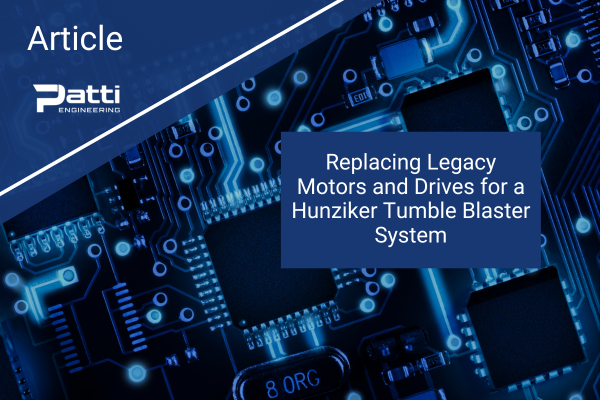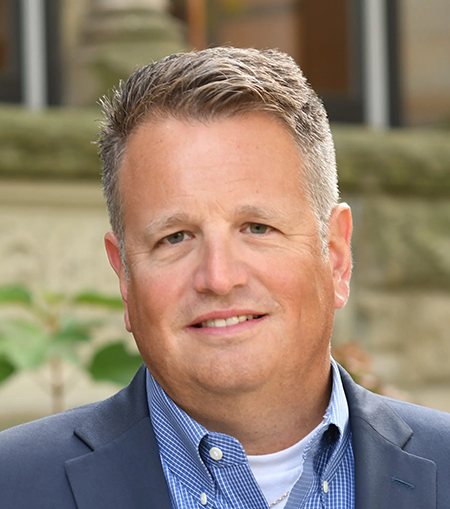
Replacing Legacy Motors and Drives for a Hunziker Tumble Blaster System
Patti Engineering integrators recently completed a project to breathe new life into a system involving an older piece of equipment – a hunziker tumble blaster. Two aging motors had been experiencing chronic problematic overheating, threatening regular production. Patti Engineering was tasked with mitigating the pending failure by replacing the motors, as well as their variable frequency drives (VFDs).
In an effort to mitigate an imminent equipment failure, a client reached out to Patti Engineering in regards to their tumble blaster system. This system included a conveyor that delivers brass fittings from a hopper to the tumble blaster. The blaster tumbles and cleans the brass fittings, which subsequently come out of the machine on the opposite side.
The issue was that the conveyor motors, due to their age, were prone to overheating and therefore were a threat to continued system operation. The plant had been mitigating the issue by blowing fans at the motors for cooling purposes, but they were well aware that this solution was temporary in nature and that the motors required replacement.
Upon evaluating the system, Patti Engineering integrators found legacy motor controllers with external capacitors as part of the system design. From inspection, it was unclear if the external capacitors were for the purposes of power factor correction, harmonic filtering, or some other filtering role as part of the VFD design. The equipment had originated from Europe, with limited hard copy electrical drawings for reference. Regardless, it was clear that should the motor drives fail, there would be no simple means of replacing them.
As a result Patti Engineering recommended replacing the motors as well as the motor drives for both conveyors in the system. The client decided to pursue this recommendation to address the motor overheating and pending failure issue while also moving to off-the-shelf spare parts.
Sizing up Legacy Motors and Drives
Engineers were able to determine the original motor size by inspecting various aspects of the system including the motor itself, the electrical drawings, and in-circuit testing.
The simplest VFD design rectifies the incoming power supply, and then pulse width modulates it to control the motor. In this simple design, the maximum operating voltage is set by the input line. In the case of these older VFDs in use, it appeared that they were a 120 V single phase design.
Selecting Replacement Motors and Drives
A suitable replacement motor needed to have a similar power rating as its predecessor to run the conveyor. In addition, the replacement needed to physically and electrically mate into the system. Engineers ultimately selected a Baldor 480 V half horsepower motor. With the motor appropriately sized, a VFD was selected that matched with the client’s brand preference.
The client had multiple recipes requiring the motors to run at different speeds as selected by the operator via an HMI interface. The PLC had communicated with the older motor drive using an analog output control signal to deliver the selected speed requirement. Using the newer drive, this was accomplished by adjusting a parameter within the VFD. As a result, the PLC and HMI programs did not require any changes.
To further safeguard the new VFDs, engineers installed a line reactor to eliminate any power surges and spikes that often occur in an industrial setting, therefore reducing stress on the VFDs to ensure a longer lifespan.
The planned downtime for this upgrade project was one week, however Patti Engineering completed it ahead of schedule, and had the system operational by the end of the second day. To wrap up the project, engineers modified the drawings to show the new drive connections to include with the system documentation.
The project breathed new life into the older machine, providing the client several more years of reliable production.
Related categories: Blog Control Systems Integration


